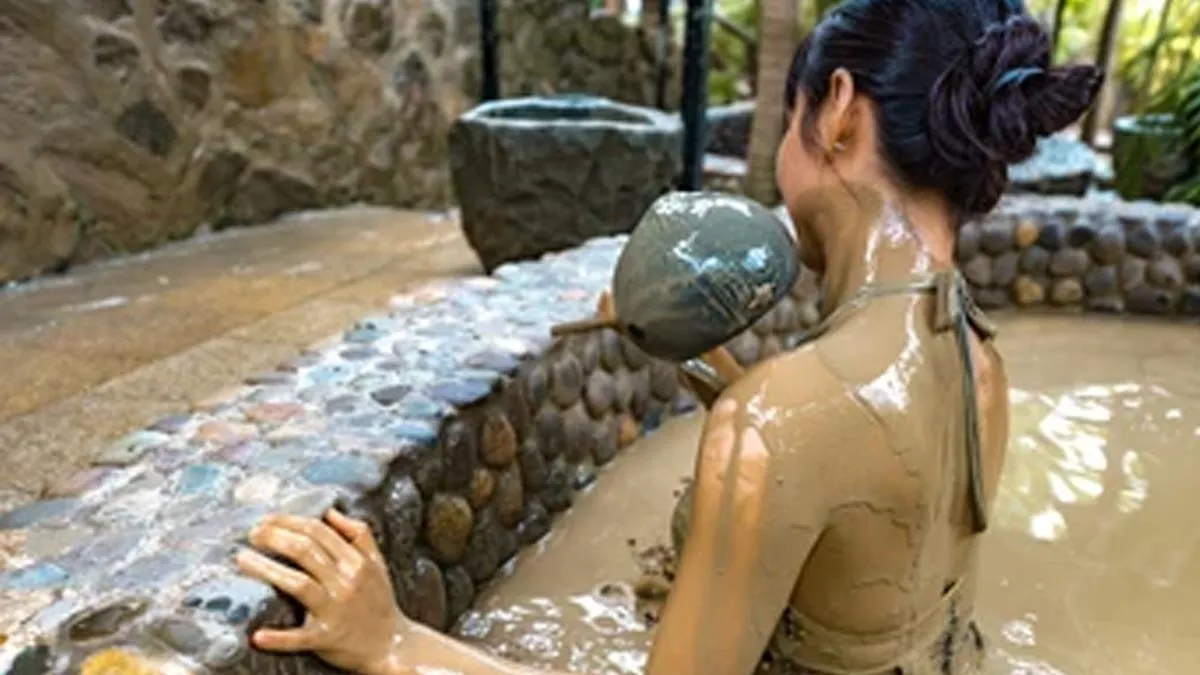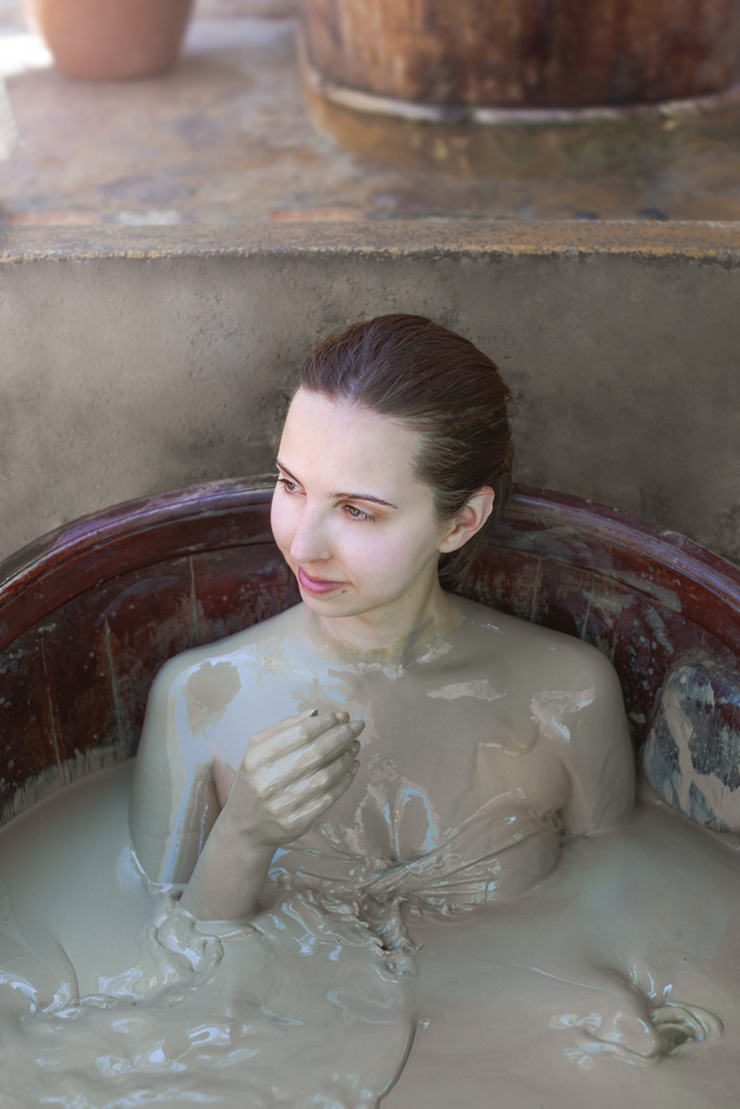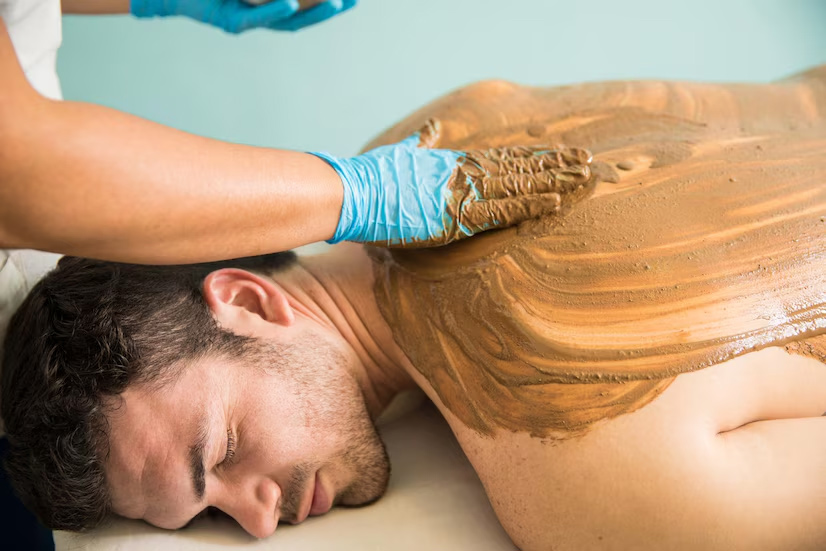
Mud baths, a therapy that has been cherished for centuries, combine natural elements to rejuvenate the skin and promote holistic health. Known for their therapeutic and cosmetic benefits, mud baths use mineral-rich mud, either from natural sources or prepared blends, to detoxify, exfoliate, and heal the skin. This ancient practice is finding renewed interest in modern wellness spaces.
Table of Content:-
What is a Mud Bath?
According to the International Journal of Pharmacy & Therapeutics, a mud bath involves submerging the body in a mixture of mud, water, and sometimes additional minerals or herbs. The mud used is often sourced from lakes, hot springs, volcanic ash, or saltwater regions, and it contains essential minerals like magnesium, calcium, and sulphur, which are beneficial for the skin.
The warm mud opens up pores, enhances circulation, and aids in the absorption of these minerals. It also provides a soothing, spa-like experience, making it a popular choice in wellness and beauty centers.
Types of Mud Used in Mud Baths
Different types of mud are chosen based on their unique properties and benefits:
Dead Sea Mud:

- Sourced from the Dead Sea, this mud is rich in magnesium, sodium, and potassium.
- Benefits: Effective in managing acne, psoriasis, and eczema due to its anti-inflammatory properties.
Volcanic Ash Mud:
- Formed from volcanic eruptions, this mud is highly absorbent.
- Benefits: Draws out toxins and excess oil, making it ideal for oily and acne-prone skin.
Clay Mud (Bentonite or Fuller’s Earth):
- Often used in facial masks, it is loaded with minerals and is highly detoxifying.
- Benefits: Reduces blemishes, tightens pores, and provides a deep cleansing effect.
Peat Mud:
- Derived from decomposed organic material, it is nutrient-dense.
- Benefits: Promotes skin healing and enhances skin elasticity.
Also read: Benefits Of Forest Bathing: How Nature Can Heal Your Mind And Body
Benefits of Mud Baths for Skin

Detoxification:
The minerals in mud draw out impurities and toxins from the skin, leaving it clean and refreshed.Exfoliation:
Natural abrasives in mud gently remove dead skin cells, improving texture and tone.Hydration:
Mud baths replenish moisture and prevent dryness, especially for individuals with dehydrated skin.Skin Healing:
Mud’s anti-inflammatory properties can alleviate skin conditions like acne, psoriasis, and eczema.Anti-Aging:
Regular mud treatments enhance collagen production, reduce wrinkles, and improve skin elasticity. A research published in Dermatology Practical & Conceptual states that mud therapy improved skin elasticity and reduced signs of aging by stimulating collagen synthesis.Improved Circulation:
The warmth of the mud boosts blood flow, imparting a natural glow to the skin.
Also read: Here Is A Mud That Can Make Your Hair Strong and Shiny
How to Incorporate Mud Baths into Your Routine

Mud baths can be enjoyed at spas, wellness retreats, or even at home with pre-packaged mud products. For best results:
Ensure the mud is heated to a comfortable temperature.
Apply a layer evenly on your skin and let it sit for 15-20 minutes.
Rinse thoroughly and follow with a moisturiser.
Conclusion
A mud bath is more than just a luxurious indulgence—it’s a proven skin therapy backed by science and tradition. Whether you're seeking to detoxify, heal skin conditions, or simply pamper yourself, mud baths offer a versatile and effective solution for radiant skin.
Also watch this video
Read Next
Glow Up For Valentine’s: Expert Shares Skincare Secrets And Last Minute Tips For Glowing Skin
How we keep this article up to date:
We work with experts and keep a close eye on the latest in health and wellness. Whenever there is a new research or helpful information, we update our articles with accurate and useful advice.
Current Version